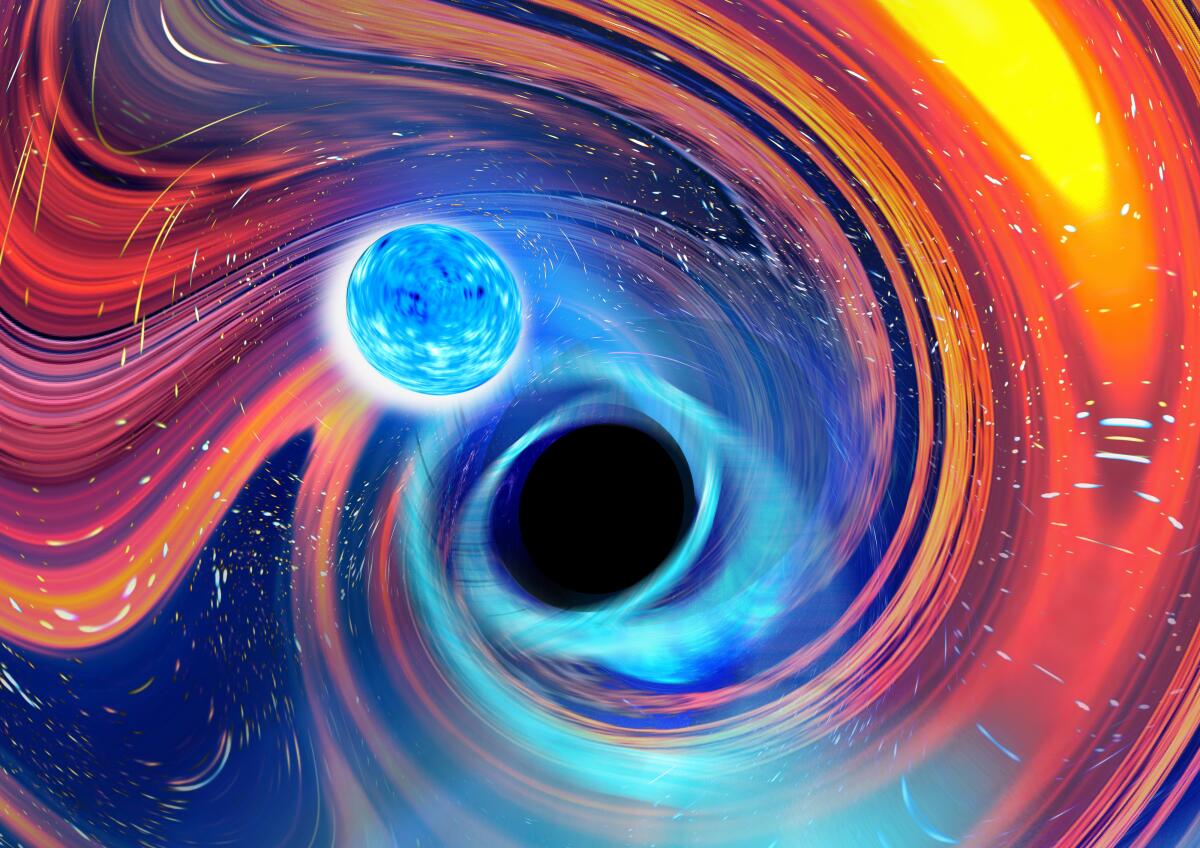Cosmic gulp: Astronomers see black hole swallow neutron star

- Share via
Talk about a big bite. For the first time, astronomers have witnessed a black hole swallowing a neutron star, the densest object in the universe — all in a split-second gulp.
And then, 10 days later, they saw the same thing — on the other side of the universe.
In both cases, a neutron star — a teaspoon of which would weigh 1 billion tons — orbits ever closer to that ultimate point of no return until it finally crashes into the black hole and is gone in a gobble.
Astronomers witnessed the last 500 orbits of the neutron stars before they were swallowed, a process that took far less than a minute and briefly generated as much energy as all the visible light in the observable universe.
“It was just a big quick [gulp], gone,” said study co-author Patrick Brady, an astrophysicist at the University of Wisconsin Milwaukee. The black hole “gets a nice dinner of a neutron star and makes itself just a little bit more massive.”
The bursts of energy from the collisions were discovered when detectors on Earth spotted the mergers’ gravitational waves, cosmic energetic ripples soaring through space and time as first theorized by Albert Einstein. They each came from more than 1 billion light-years away.
More than a billion years ago, in a galaxy far away, two black holes surrendered to one another’s inexorable attraction and collided with such force that it disturbed the very fabric of the universe.
The waves were detected in January 2020, but the study analyzing and interpreting the data by more than 100 scientists was published Tuesday in Astrophysical Journal Letters.
Although astronomers had seen gravitational waves from two black holes colliding with each other and two neutron stars colliding with each other, this is the first time they saw one of each crashing together.
Neutron stars are corpses of massive stars, what’s left over after a big star dies in a supernova explosion. They are so dense that they have about 1.5 to two times the mass of our sun, but condensed to about six miles wide, Brady said.
Some black holes, known as stellar black holes, are created when an even bigger star collapses into itself, creating something with such powerful gravity that not even light can escape.
Scientists think there should be many of these neutron star and black hole pairings, but they’ve yet to find one in our own galaxy.
“This is very cool,” said Johns Hopkins University astrophysicist Marc Kamionkowski, who wasn’t part of the research. He said this will help astronomers predict how abundant these pairings are.



